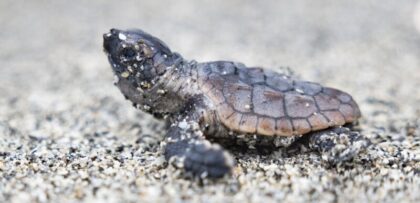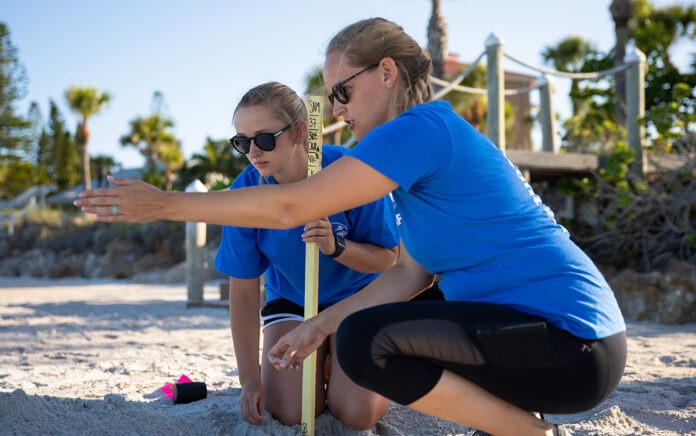Mote Marine Laboratory & Aquarium has announced a historic sea turtle nesting season in 2025, documenting the highest number of nests in its 43-year monitoring history, even as researchers sound the alarm over a dramatic increase in hatchling disorientations.
Mote’s Sea Turtle Conservation and Research Program (STCRP) recorded a total of 5,735 sea turtle nests along the 35 miles of Sarasota County beaches, stretching from Longboat Key to Venice. This record far surpasses the 4,369 nests documented in 2024.
Nesting Success: A Conservation Triumph
The vast majority of nests were laid by Loggerhead turtles (Caretta caretta), a threatened species, accounting for 5,384 nests. Green sea turtles (Chelonia mydas) contributed 351 nests, with occasional rare nests from Kemp’s ridley and leatherback turtles also observed.
accounting for 5,384 nests. Green sea turtles (Chelonia mydas) contributed 351 nests, with occasional rare nests from Kemp’s ridley and leatherback turtles also observed.
Dr. Jake Lasala, Manager of Mote’s STCRP, celebrated the achievement. “This year’s record numbers show that Mote’s conservation measures are working,” Dr. Lasala stated. The program’s success is bolstered by daily surveys conducted by the Sea Turtle Patrol, a dedicated team of STCRP staff, interns, and over 300 volunteers, who monitor and protect nests from April 15 through October 31 (with a few nests still incubating into November this season).
The New Challenge: Rising Disorientations
Despite the record nesting numbers, the data also revealed a disturbing trend: 716 disorientation events, the highest number ever documented by Mote.
Disorientations occur when artificial lighting along the shoreline misleads hatchlings or returning nesting females. Instead of heading toward the natural light over the ocean, the turtles are drawn inland, often leading to exhaustion, dehydration, or death.
Dr. Lasala emphasized the urgent need for community action to address this new challenge. “However, we’re seeing new challenges emerge, such as the rise in disorientations. It’s more important than ever for our community to turn off or shield beachfront lights, remove beach furniture at night, and keep nesting areas clear to give every hatchling the best possible chance at survival.”
Long-Term Monitoring Informs Protection
Mote’s STCRP has been a cornerstone of sea turtle protection since 1982, maintaining one of the longest continuous sea turtle monitoring datasets in the U.S. Scientists use this long-term data to study population trends, reproductive success, and how human and environmental factors affect nesting behavior. This research directly supports management decisions made by local, state, and federal conservation partners.
Mote’s sea turtle activities are conducted under multiple FWC Permits. The public can learn more about joining the Sea Turtle Patrol or how to help protect sea turtles by visiting mote.org/seaturtles.

